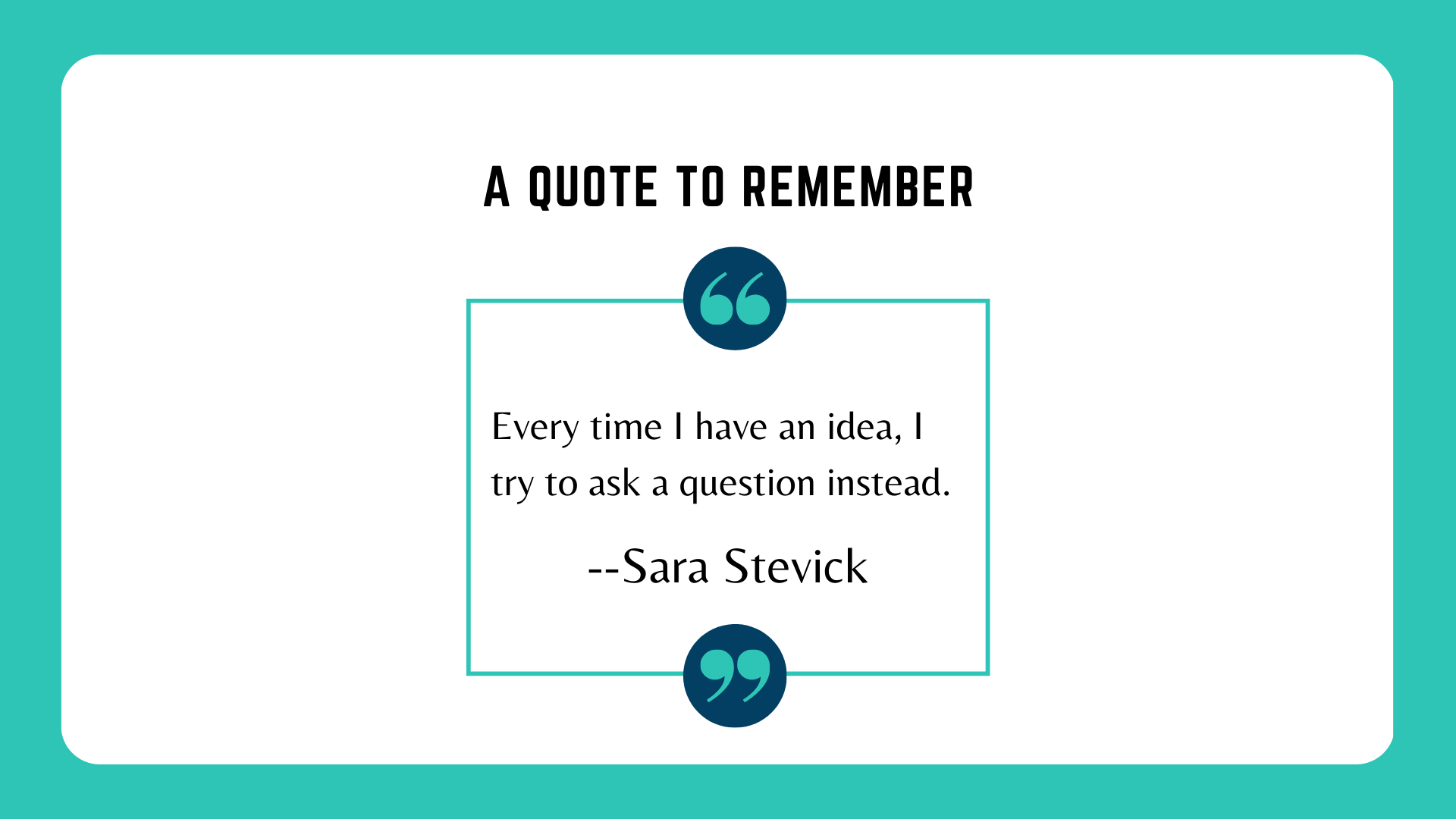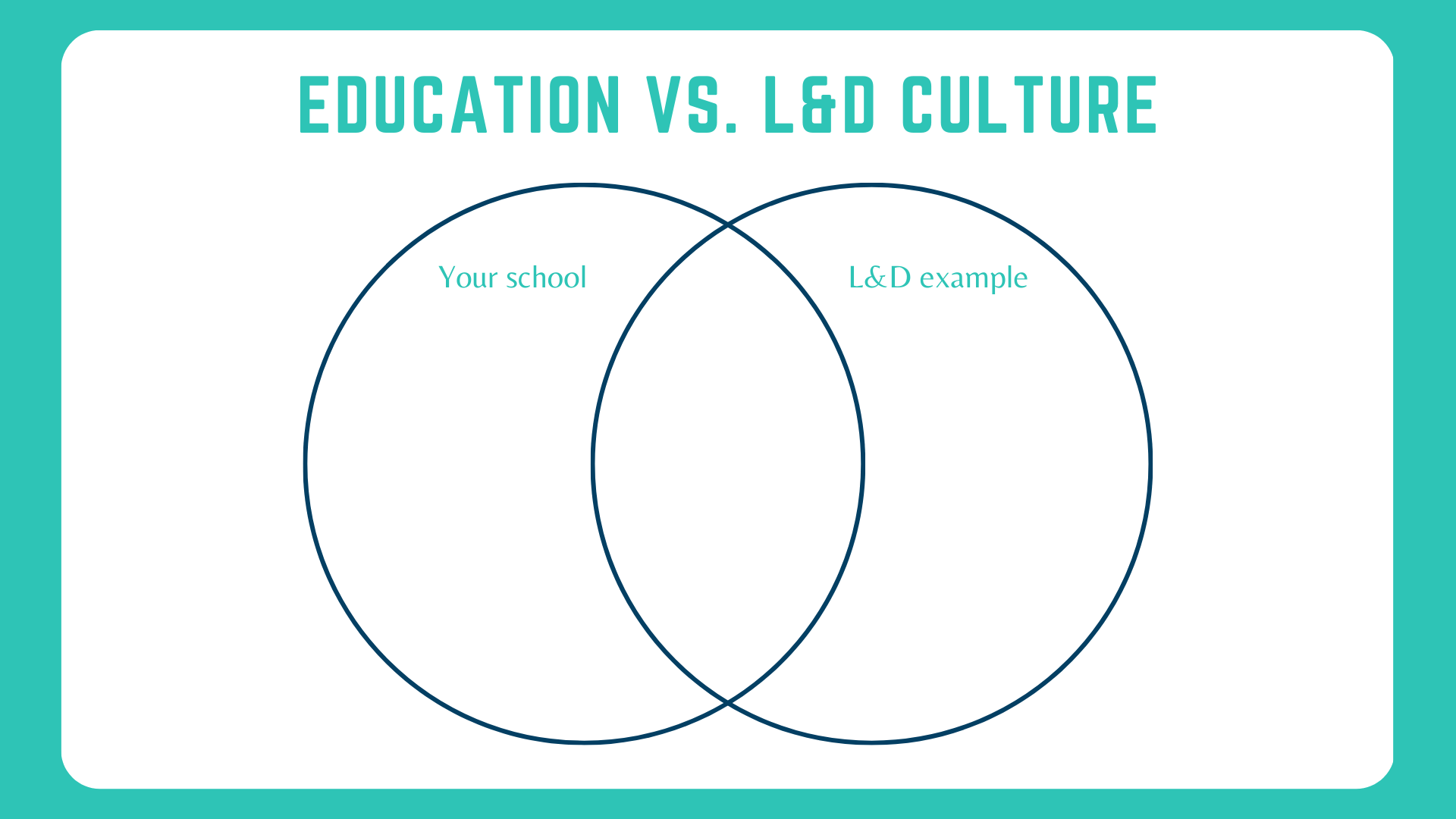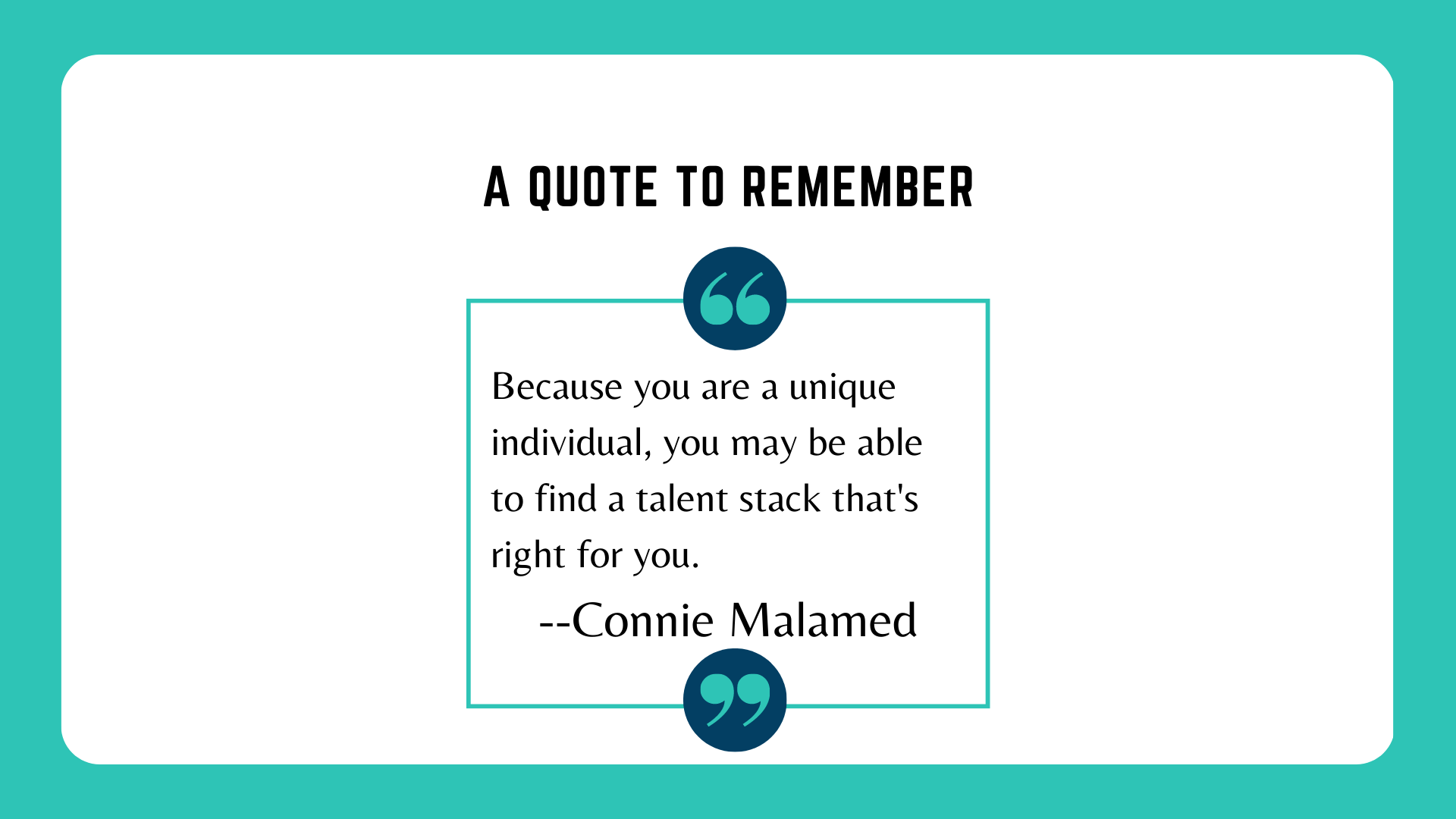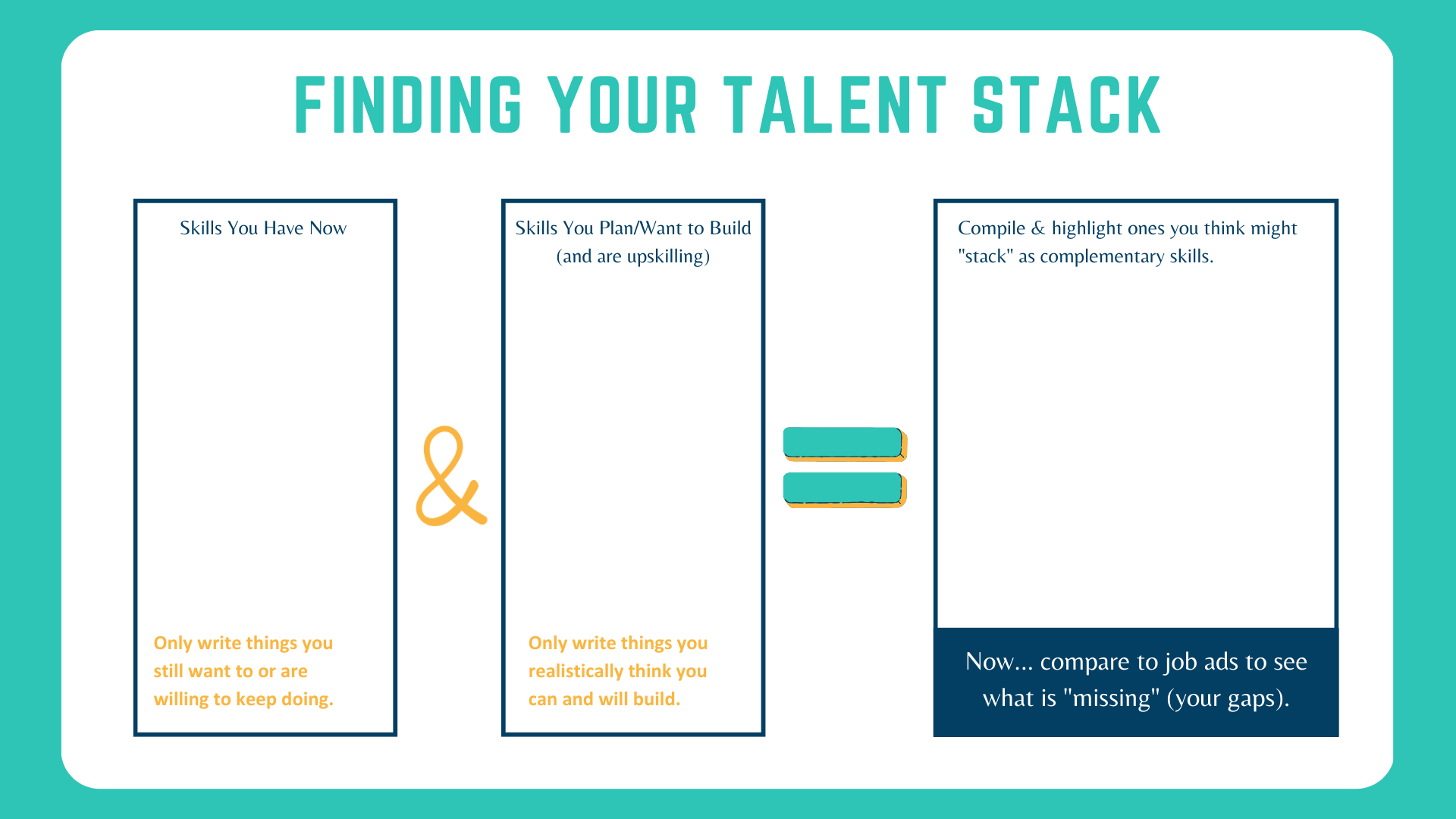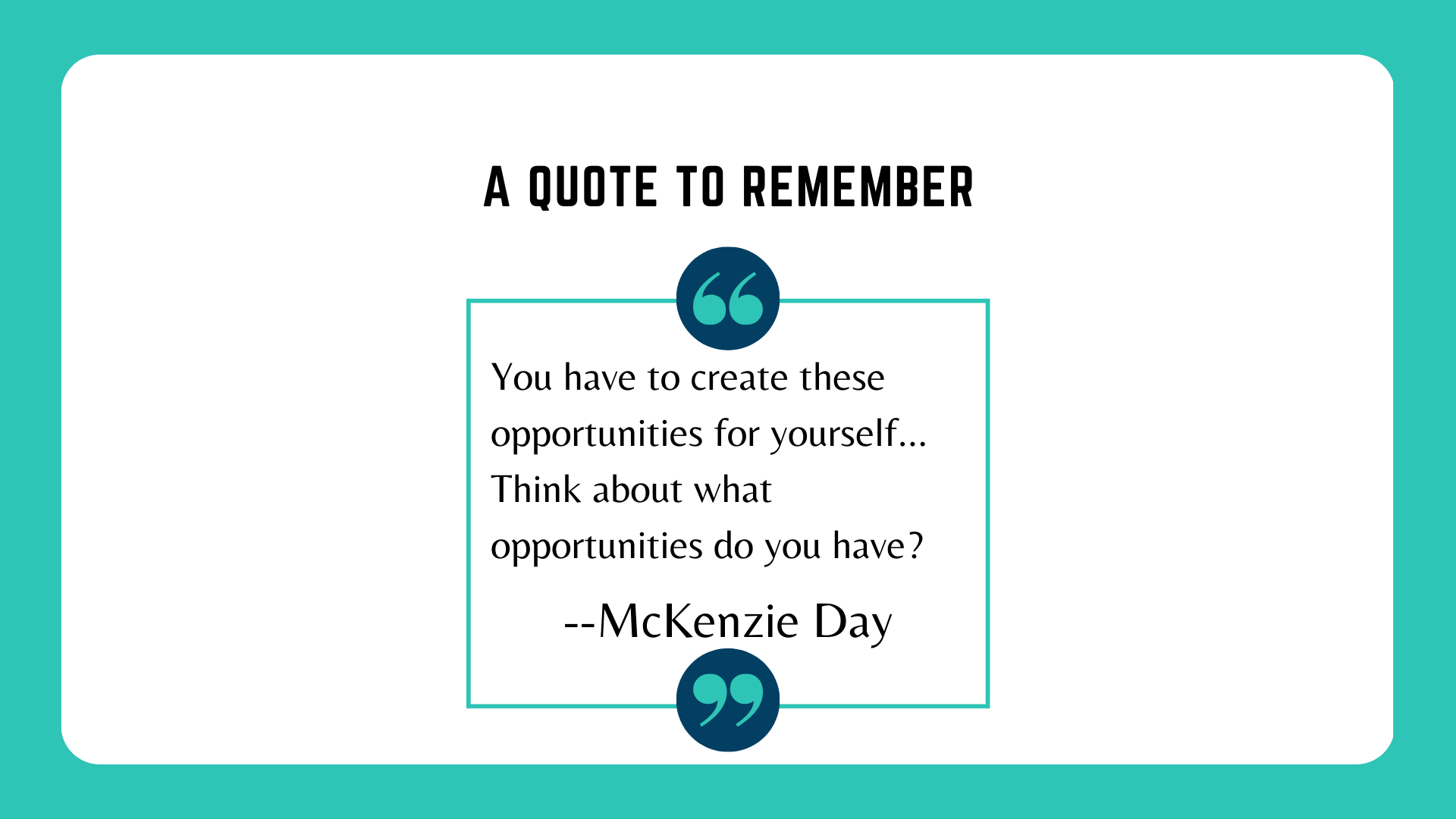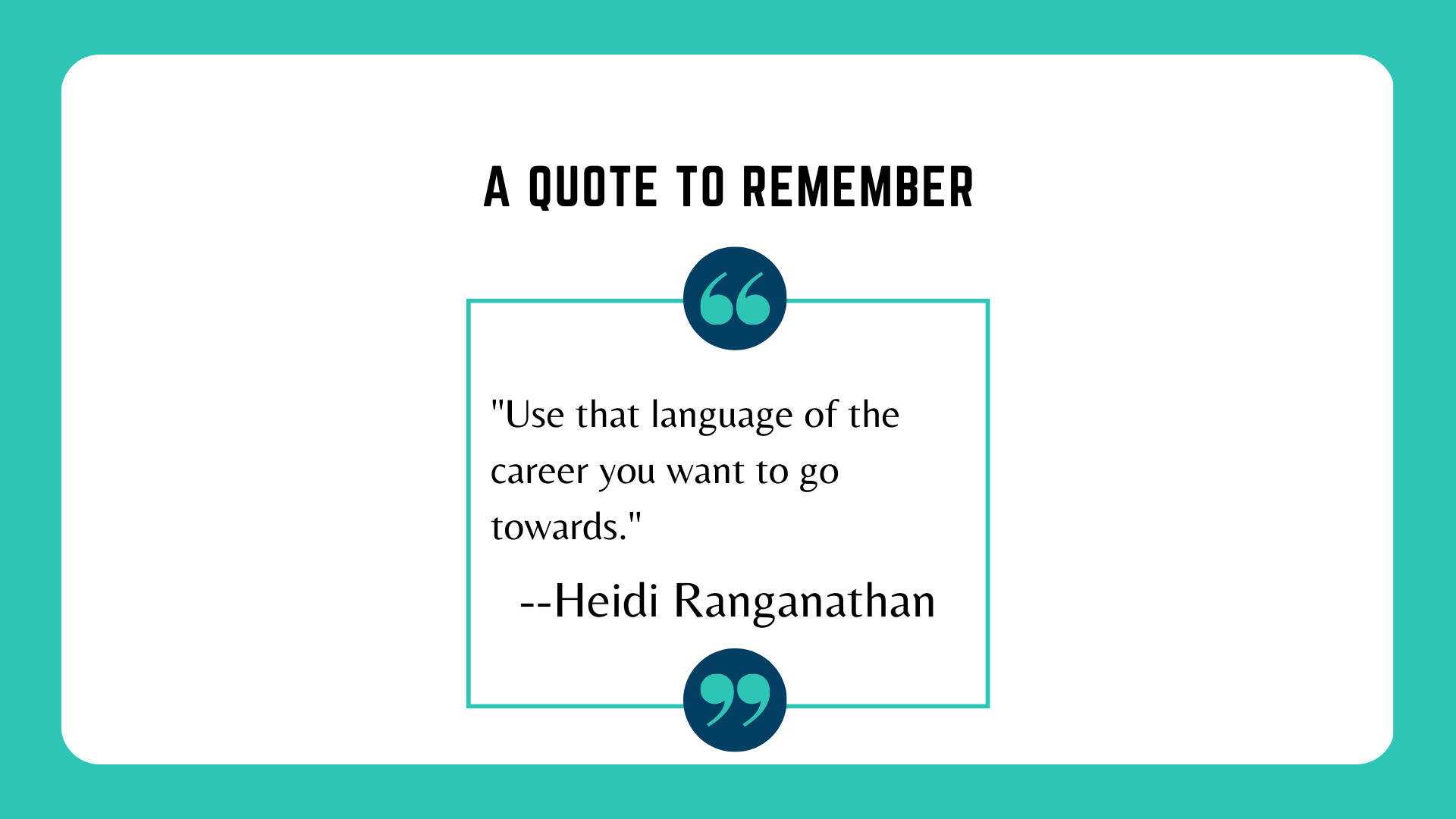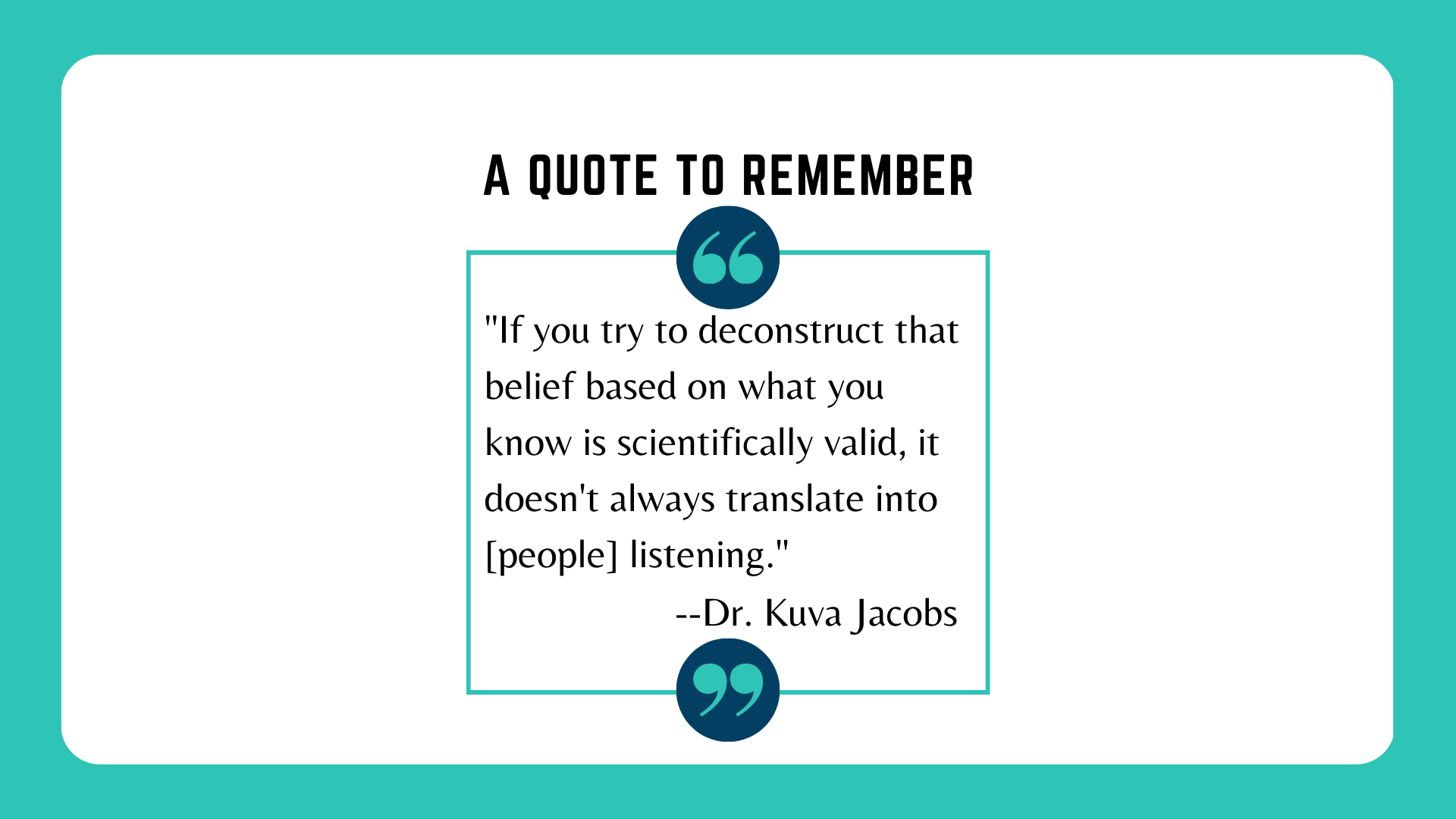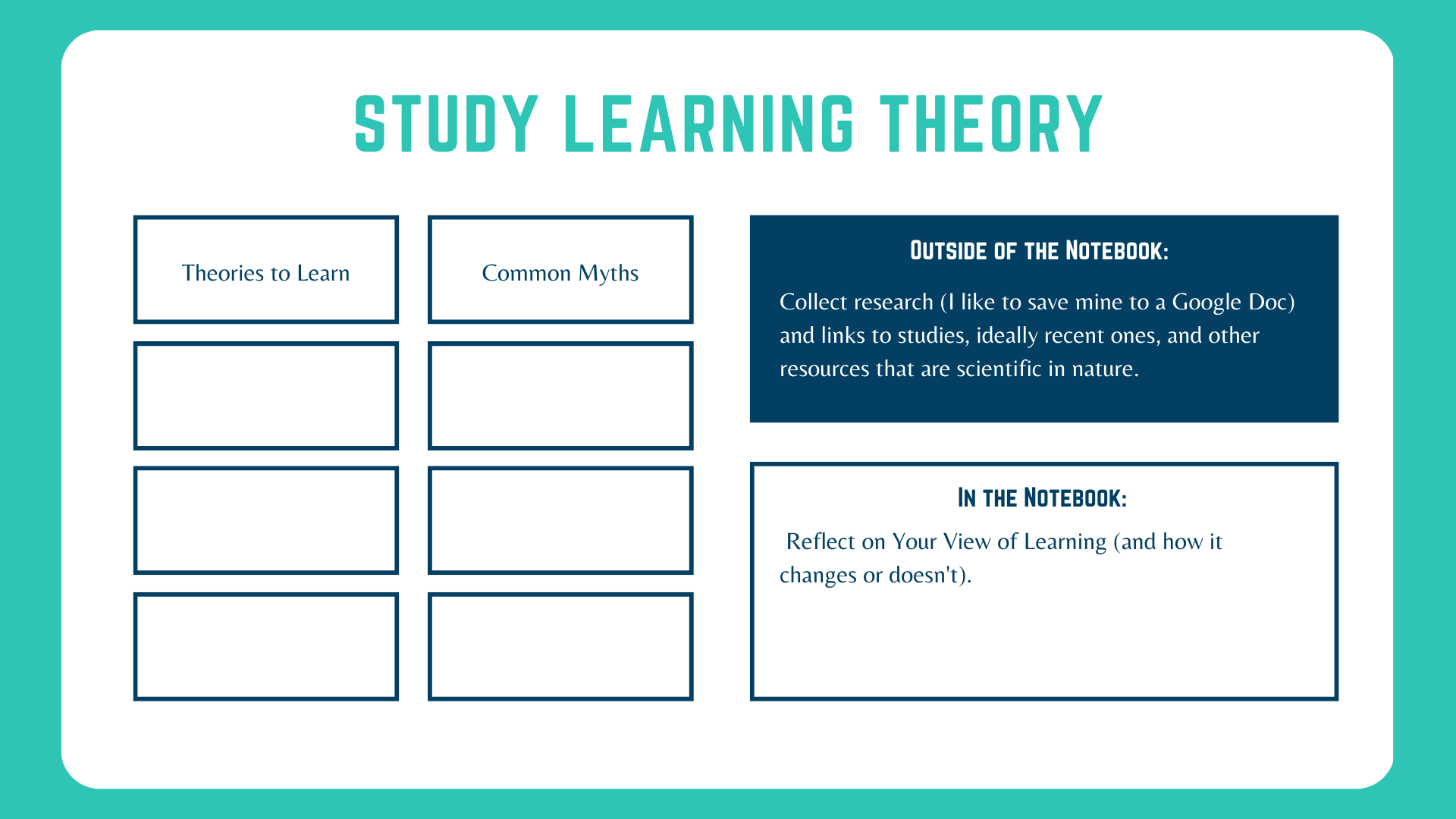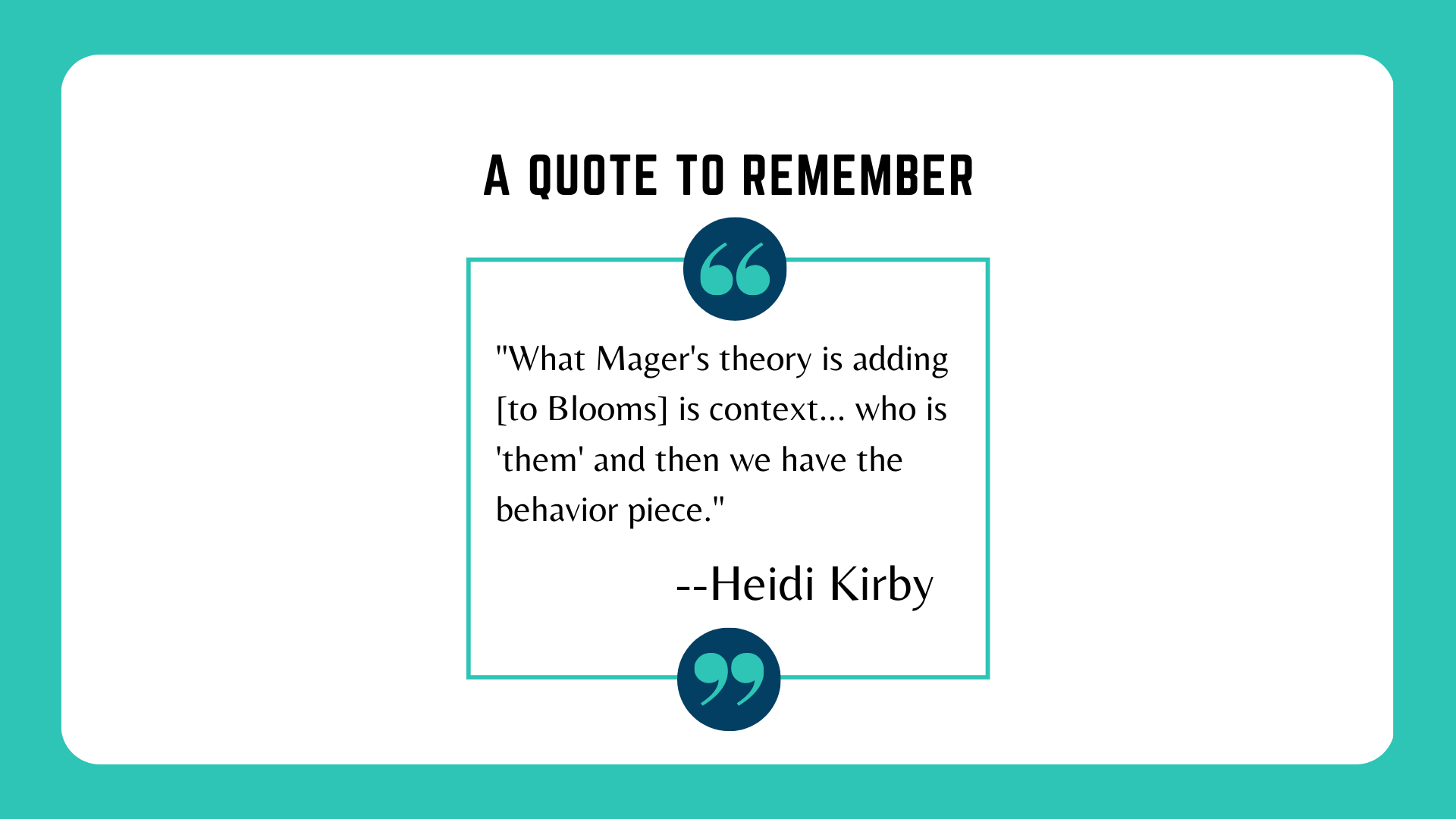Transitioning Teacher Workbook: Mental Homework and Recapping TLDC January 2023 Transitioning Teacher Event
About the Project
The Project: TLDC (The Training, Learning, and Development Community) hosted an event January 2023 for the 2nd year to reach out to transitioning teachers. In addition to presenting at the conference, I wanted to add some further value by creating resources and exercises for teachers to take their viewing into active learning that continued after the conference. These posts appeared as a series on LinkedIn and my blog every Tuesday and Thursday once the conference recordings were posted. Each offers a workbook “mental homework” exercise to add on to a webinar session.
My Skills: This project shows my skills in creating practice exercises to help extend learning, my community building, and my big picture curriculum thinking, as it ties together larger themes and ideas from the separate webinars. During the event, I also organized a table schedule for Teaching: a Pathway to L&D and helped mentor/coach teachers who visited the table as well as ensured volunteers staffed the table throughout the event. Additionally, I presented my own session/webinar on Friday of the conference.
Workbook #1: Sara Stevick Discusses Learning Culture
Homework: Compare learning culture of your school (Professional Development for staff) to someone’s experience at a for-profit company for similarities and differences (doesn’t need to be a L&D professional)
The homework here extends the learning by having teachers think about training and professional development in their environment, as well as other organizations to determine differences, similarities, and connections between different learning cultures. This helps create a mental shift towards the “big picture” culture vs. the small picture of individual classrooms. Teachers control the culture of their classrooms but not their schools/districts, so there is a lot to learn there that applies to organizational learning culture.
Workbook #2: Connie Malamed Introduces the Concept of the “Talent Stack” for L&D
Homework: Take an inventory of the skills you already have and could put on a resume, plan for the skills you intend to build or are already actively upskilling, research job ads, and begin to build a “Talent Stack” of your own complementary skills.
The homework here extends the learning by having teachers think about themselves as individuals and take inventory of the talents and skills they already have. Then, they should take the time to plan for the skills they intend on building—doing this will make upskilling more efficient and intentional. Finally, from those lists, they should begin to identify complementary skills and plan a talent stack they think will both match the current job market (based on job ads and research), and identify what they think their talent stack might be.
Workbook #3: McKenzie Day’s Suggestions for the Transition
Homework: There are two pieces of homework here: 1) Identify opportunities you’ve already had and 2) Plan a new opportunity that will highlight a skill you want to highlight further or have not highlighted before.
The homework here extends the learning by having teachers reflect on the experience they have currently, especially experiences beyond regular day to day teaching that may help them stand out as individual candidate (such as leading school or district PD, planning events, creating a curriculum to close a grade-level gap, leading a department, etc.) and how those experiences connect with the skills they want to show in their transition. Next, as McKenzie suggests in the webinar, they use the organizer to plan an opportunity for the future that will show a skill effectively, where they can collect data/metrics (KPIs, OKRs, etc.) that shows their impact.
Workbook #4: Heidi Ranganathan translates Teacher to ID Terminology for Resumes
Homework: Use the Translation Template. In order to do this successfully, I do think you need to research what you want to do, immerse yourself in it, listen to people “talking the lingo” already on podcasts, webinars, in books, etc.
The point of this homework is to begin to get you comfortable making examples like Heidi’s. The more particular and unique they are to you, the better. This is why the myriad of translations that already exist will not serve you alone: you must write your own because, as we learned in an earlier video, you are a unique individual. You are not selling “Teacher to ID” when you apply. You are selling your skills specifically. You will probably trim for your resume, but you want to write them big first and then trim (I think) to make sure you also get specificity. And you also want to just be able to discuss them — more and more. Remember, if you want to go somewhere different, you have to think differently.
Workbook #5: Sara Stevick Talks L&D Tools
Homework: Begin to keep a “Tech Tool” journal to track tools you know, types of tools you’ve heard of, and tools you want to learn more about.
Why is this helpful? Well, I use lots of tools, many I used before education or that aren’t strictly educational tools, but I also obviously used educational technology in the classroom, and I’ve learned plenty recently. It has gotten to the point that when people talk to me about tools, I know “enough” in most areas that most people come to the conclusion that I’ve used something like it or several things like it, which reduces their concern over “exact” experience. Most people don’t really care if you’ve used the exact tool (there are exceptions) as much as if you can use the tool fairly easily. Once you use enough tools, the learning curve goes down dramatically and most people realize this. The point of this homework is to begin to get you comfortable with L&D technology and tools, talking about them, adopting new ones, and generally understanding how organizations and instructional designers might use them.
Workbook #6: Dr. Kuva Jacobs Discusses Learning Myths — and How to Bust Them
Homework: Similar to your “Tech Tools” journal, keep a journal for learning theories — and learning myths — you have seen as well as different research that interests you or you think would be particularly useful as a foundation for the work you want to do!
The point of this homework is to both build and maintain your academic understanding of learning. Learning theories change, they evolve, new research and questions emerge, new trends become top of mind, and it’s worthwhile to have an anchor when you’re reading new things and upskilling. It’s also helpful to have a sense of yourself, how you internalize learning theories, and where you have blind spots or strengths.
Workbook #7: Heidi Kirby Shows How to Create Performance-Based Learning Goals
Homework: Practice thinking about your existing learning goals or training goals you have seen in new frameworks, like Mager’s, and with contextualization to training like Heidi teaches!
Why is this helpful? Good learning is good learning. That’s what I strongly believe, at least. Believe it or not, I do not fundamentally approach learning differently in corporate than I do in teaching (though some of that depends on how you approached teaching). My foundational understanding of adult learning is not fundamentally different than how I approached many high school programs. It is very different than how I taught Kindergarten, but I had already taught across systems, countries, grade levels, conducted PDs, and I can tell you there are always differences but many methods work across contexts. AND many methods fail inexplicably when people don’t consider and understand their particular context, no matter how sound the approach to learning is — that’s why Mager’s and models like it are helpful. All learning is the same, but all learning is different. Contextualization is crucial to that difference. The point of this homework is to both build and maintain your understanding of crafting a target. One thing that’s true in both K12 education and corporate training (and anywhere else someone is learning, teaching, or training) is that you’re much more likely to have and notice success when you know what you’re aiming for.
Workbooks #8, 9, and 10 are coming soon!
Credits & Resources
Images in this project were sourced from paid subscriptions to Canva. None of the videos linked to this are my own and are properly credited in the blog posts that are linked!
